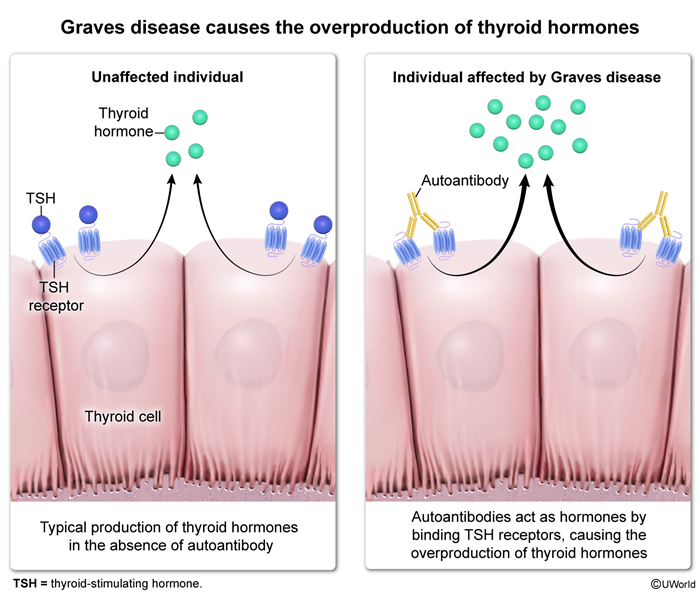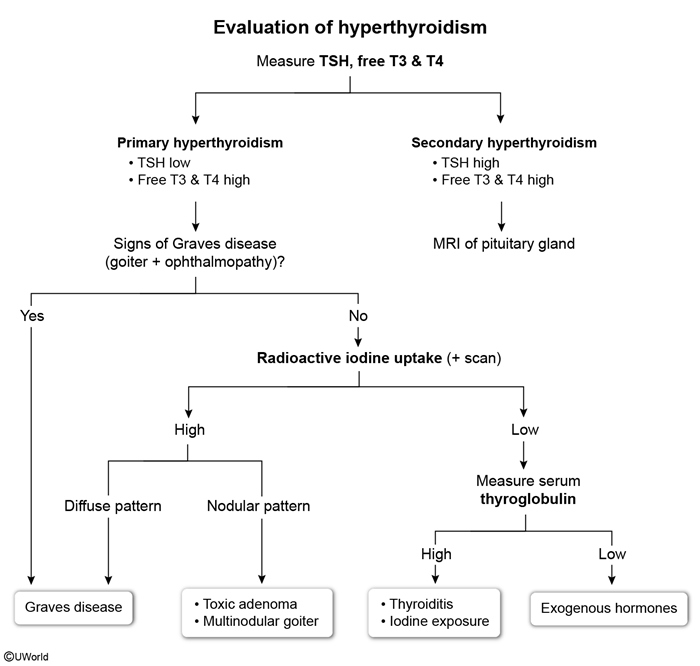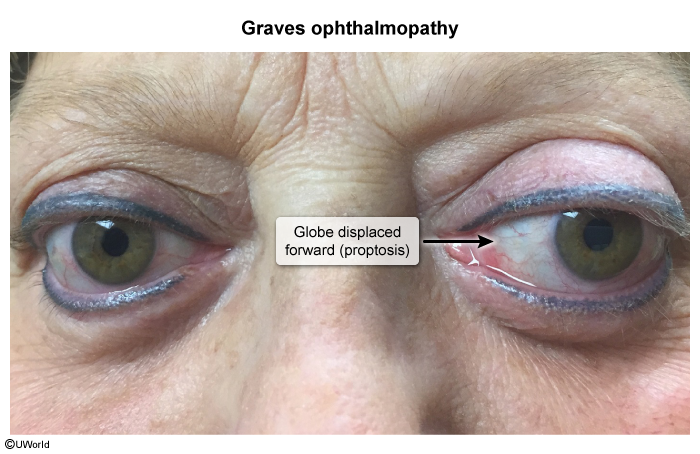Hyperthyroidism
Article Sections
Introduction
Hyperthyroidism is characterized by excessive circulating levels of thyroid hormone, usually due to increased hormone synthesis or thyroid gland injury with release of preformed thyroid hormone.
Thyroid hormone is secreted primarily in the form of thyroxine (T4), then converted into triiodothyronine (T3, the more active form) by deiodination in peripheral tissues. It stimulates basal metabolic activity in multiple organ systems. Hyperthyroidism induces a hypermetabolic state associated with increased energy expenditures. In addition, thyroid hormone induces expression of beta-adrenergic receptors; the resulting hyperadrenergic state leads to much of the symptomatology and cardiovascular complications of hyperthyroidism.
General clinical features
Patients with hyperthyroidism typically seek care due to nonspecific, systemic symptoms. Virtually every organ system can be influenced by excess thyroid hormone, and presentation is highly variable. Hyperthyroidism also is often detected during evaluation of other disorders (eg, atrial fibrillation, hypertension).
Continue Learning with UWorld
Get the full Hyperthyroidism article plus rich visuals, real-world cases, and in-depth insights from medical experts, all available through the UWorld Medical Library.
Figures




Images

